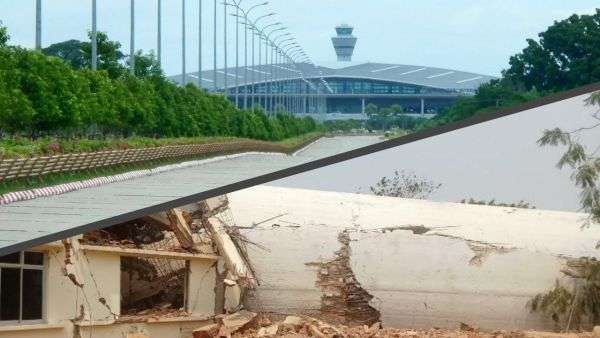Myanmar Earthquake: ATC Tower Collapse and Aftermath
A devastating 7.7-magnitude earthquake struck Myanmar on March 28, 2025, causing widespread destruction and claiming over 1,000 lives. Among the significant infrastructural damages was the collapse of the air traffic control (ATC) tower at Naypyitaw International Airport, resulting in the deaths of all six staff members on duty.
(The incident is still new, investigations are ongoing, and the information we share has been obtained from the most reliable sources as of today.)
Impact on Naypyitaw International Airport
Naypyitaw International Airport, located approximately 16 kilometers southeast of Myanmar’s capital, serves as a critical hub for both domestic and international flights. The airport features a single runway (16/34) measuring 3,657 meters in length and 61 meters in width, capable of accommodating large aircraft.
The ATC tower, a vital component of the airport’s operations, stood approximately 62 meters tall and was responsible for managing all air traffic in and out of Naypyitaw. Satellite imagery revealed that the tower was sheared from its base during the earthquake, with debris scattered around the site. The collapse not only resulted in the tragic loss of life but also severely disrupted air traffic control capabilities, leading to the temporary closure of the airport.

image source
Technical Considerations
Air traffic control towers are engineered to withstand various environmental stresses, including seismic activity. However, the intensity of the 7.7-magnitude earthquake likely exceeded the structural limits of the Naypyitaw ATC tower. This event underscores the importance of incorporating advanced seismic-resistant design principles in the construction of critical aviation infrastructure, especially in seismically active regions. Implementing base isolators, energy dissipation devices, and flexible structural systems can enhance the resilience of such structures against earthquakes.
Broader Implications
The collapse of the ATC tower at Naypyitaw International Airport highlights the vulnerability of aviation infrastructure to natural disasters. Ensuring the structural integrity of such facilities is paramount to maintaining operational continuity and safeguarding lives. This incident serves as a critical reminder for aviation authorities worldwide to assess and upgrade the seismic resilience of their infrastructure to mitigate the risks posed by similar catastrophic events.
Recommended Article: Are Air Traffic Controllers Strategic Experts? A Deep Dive into Strategy and ATC Roles


